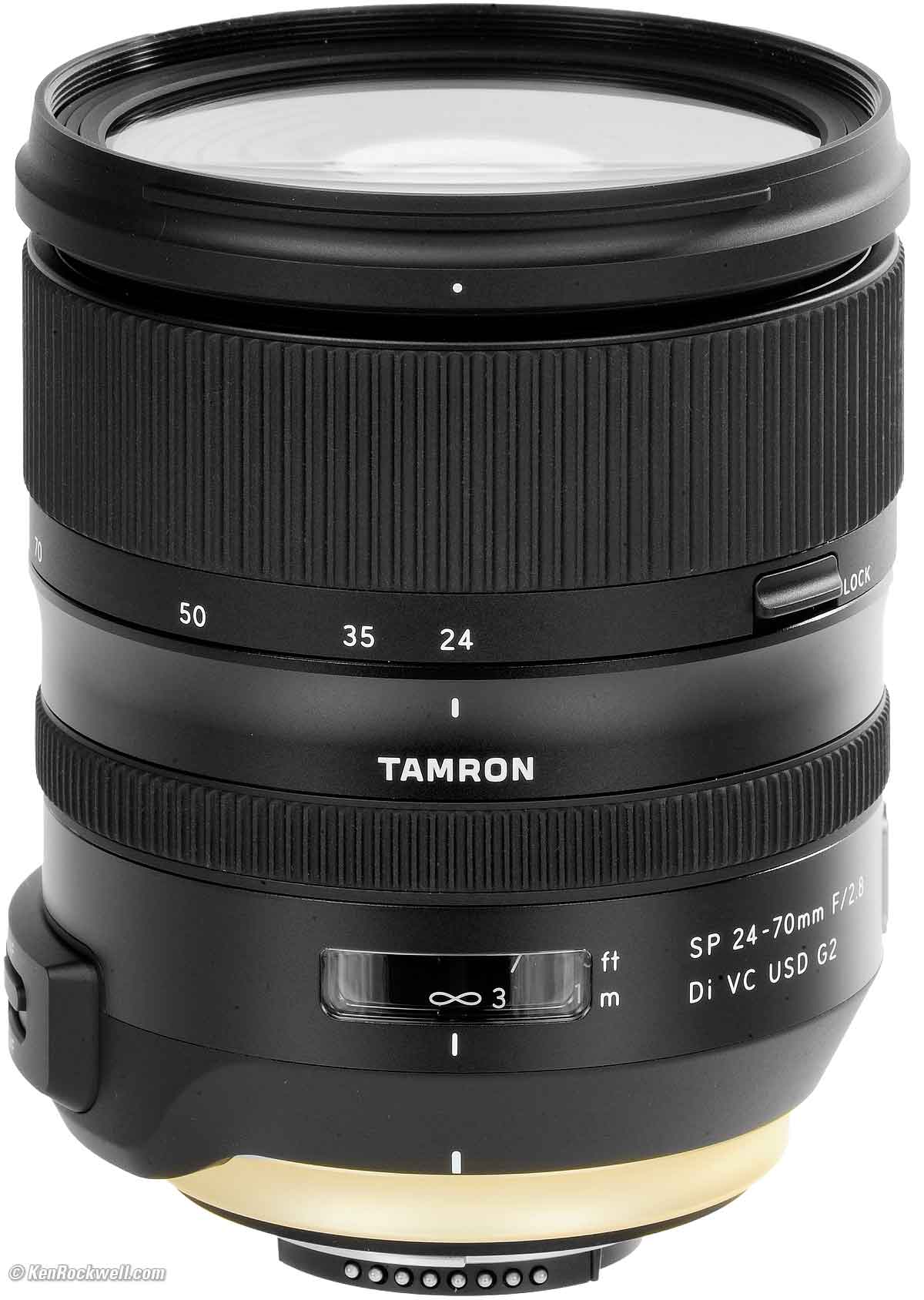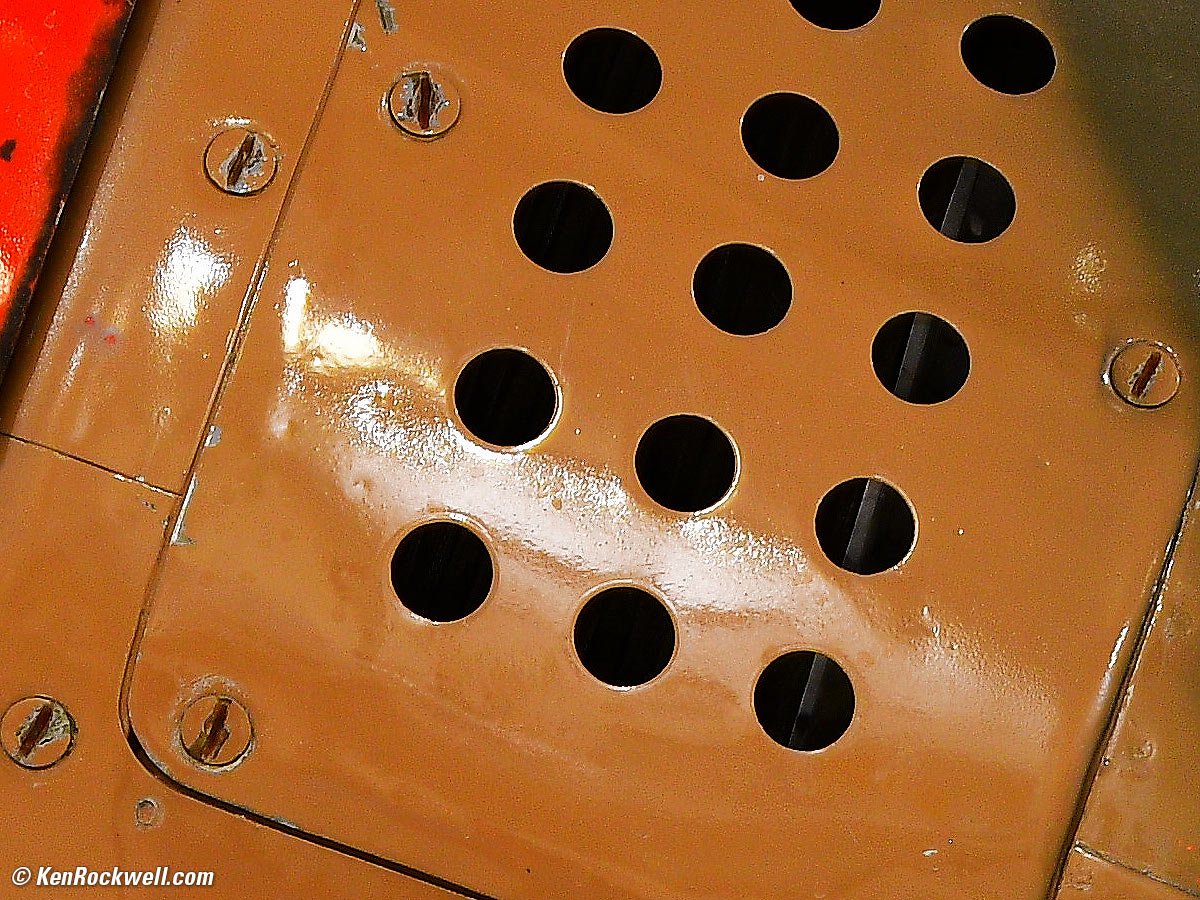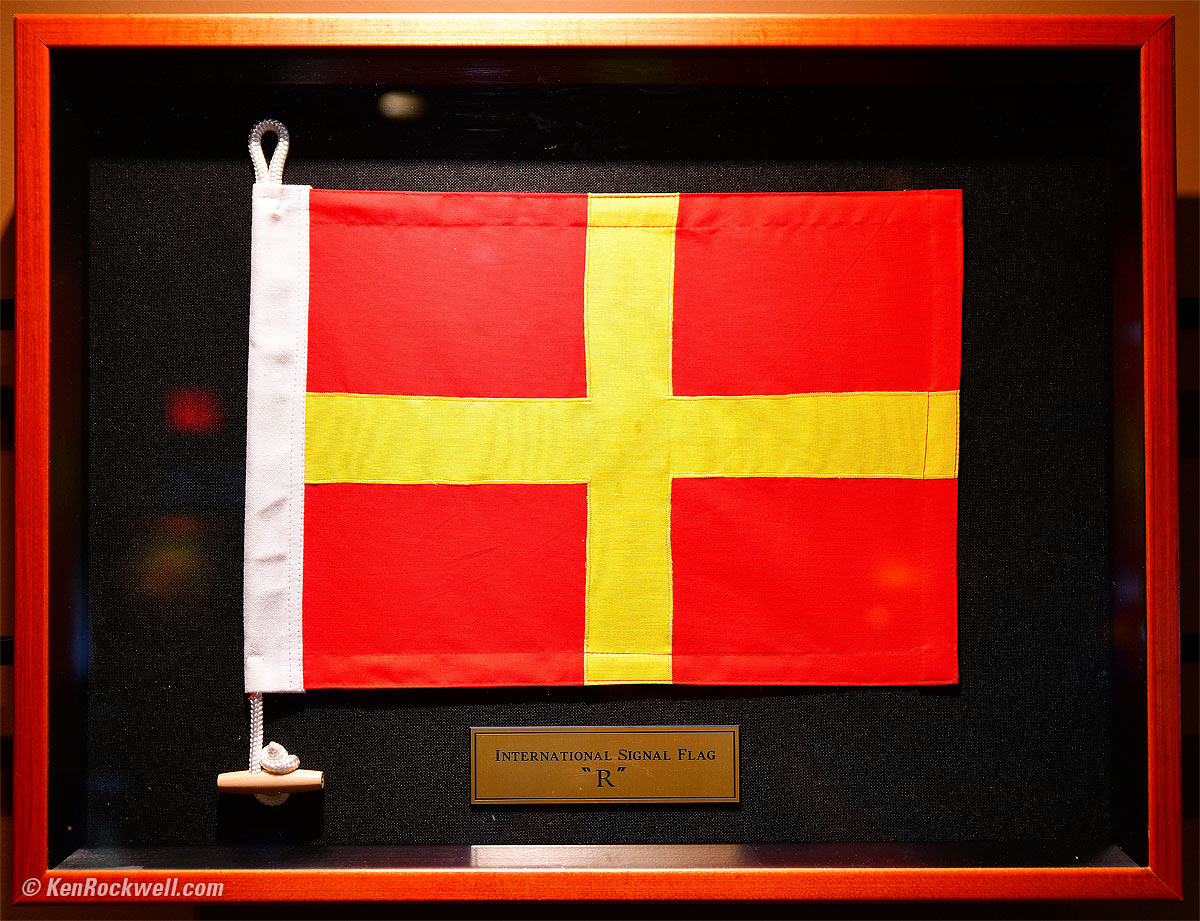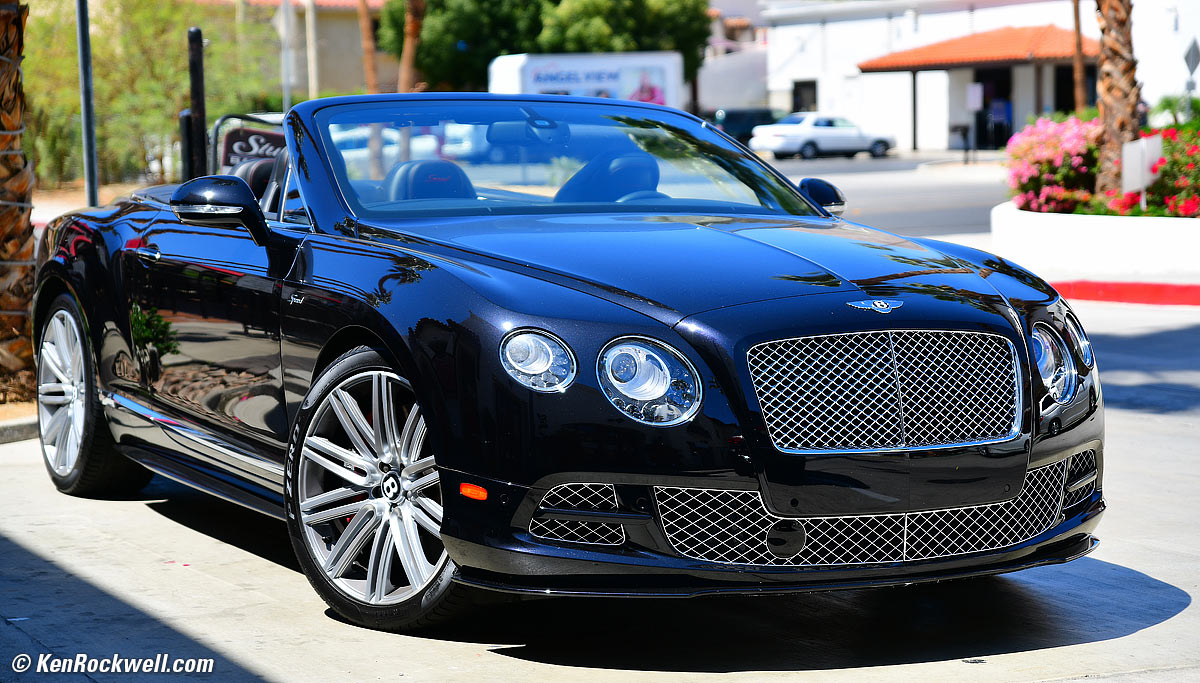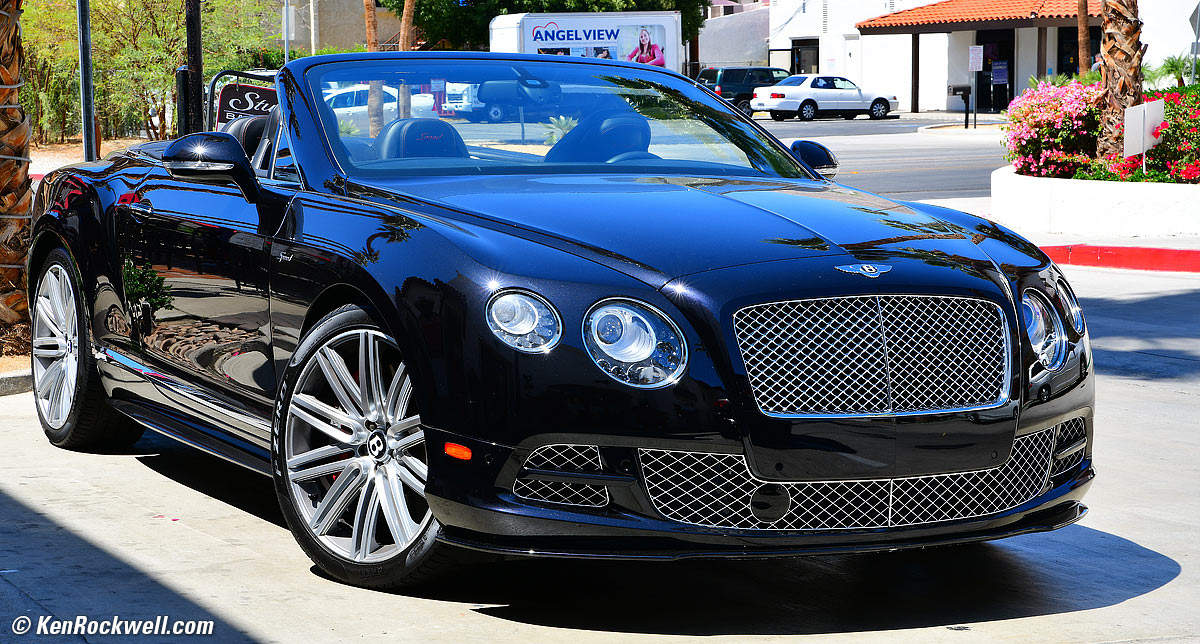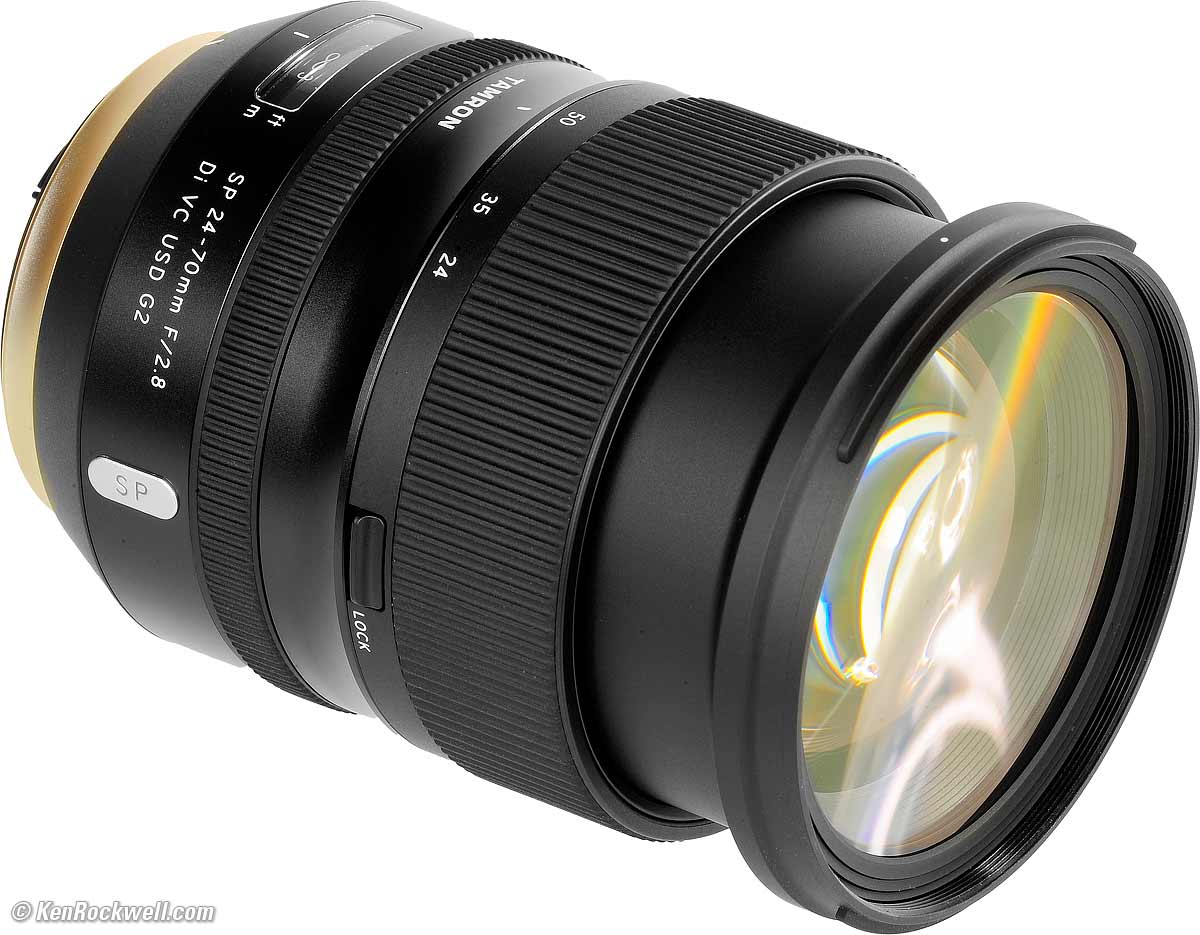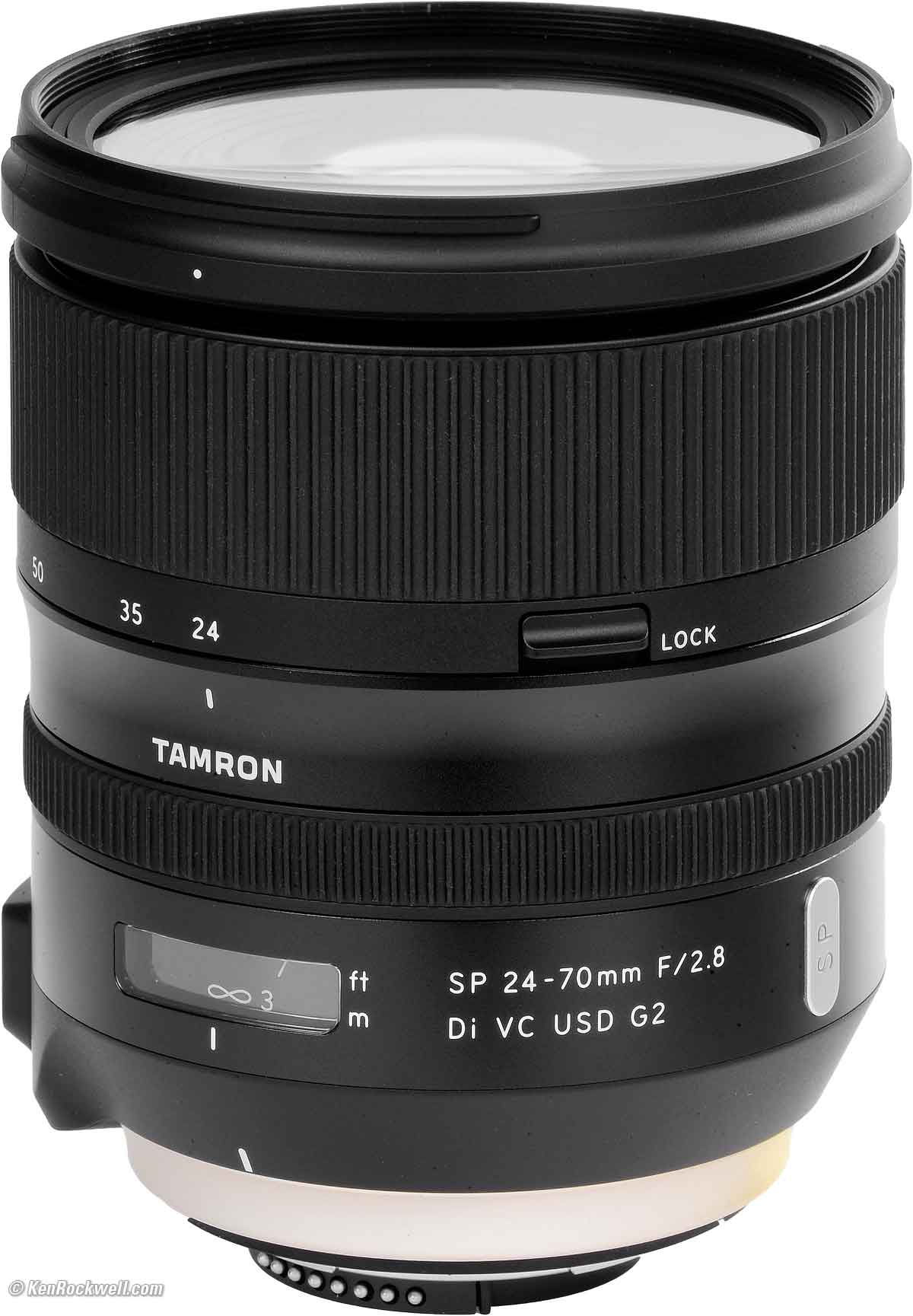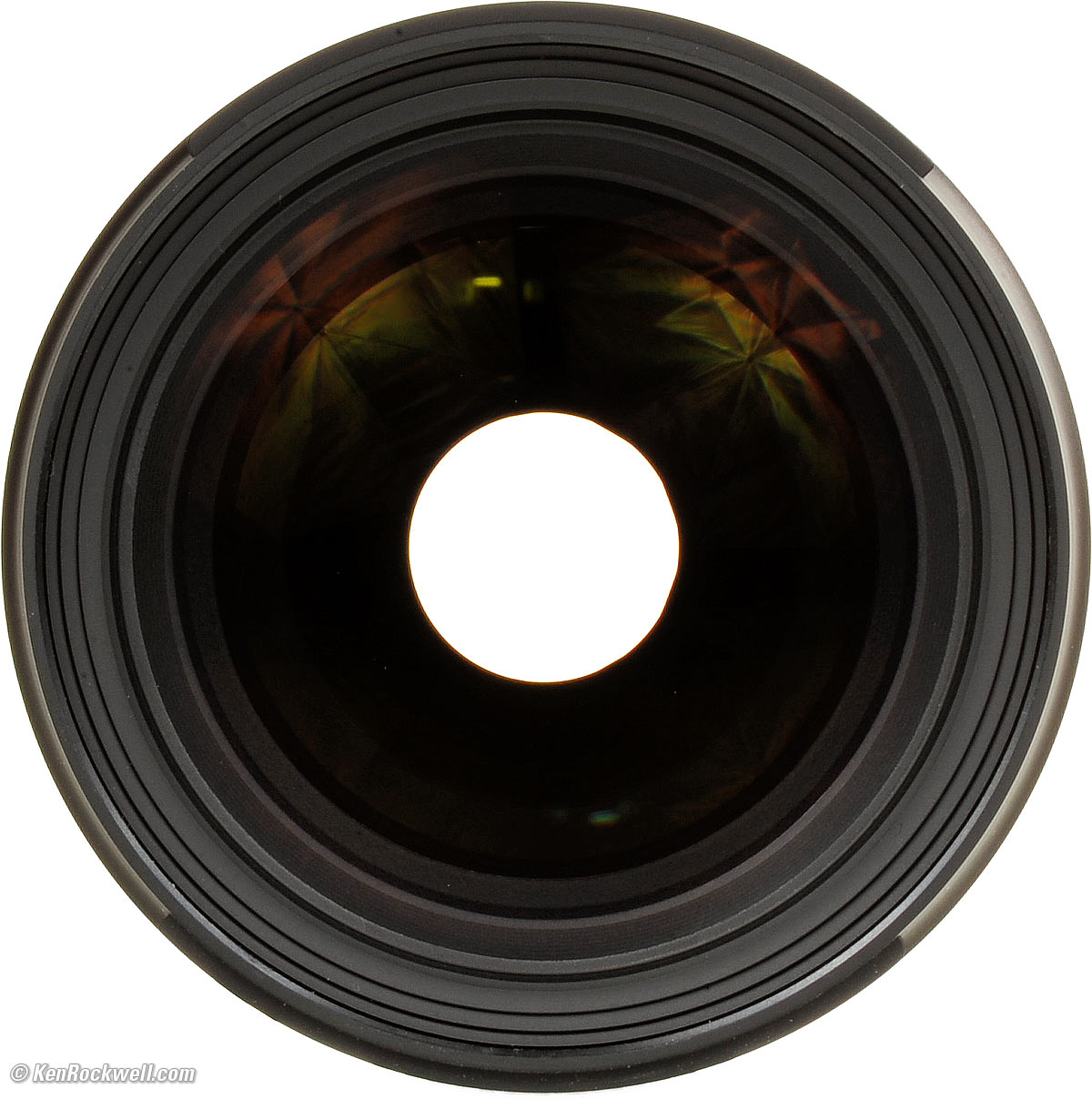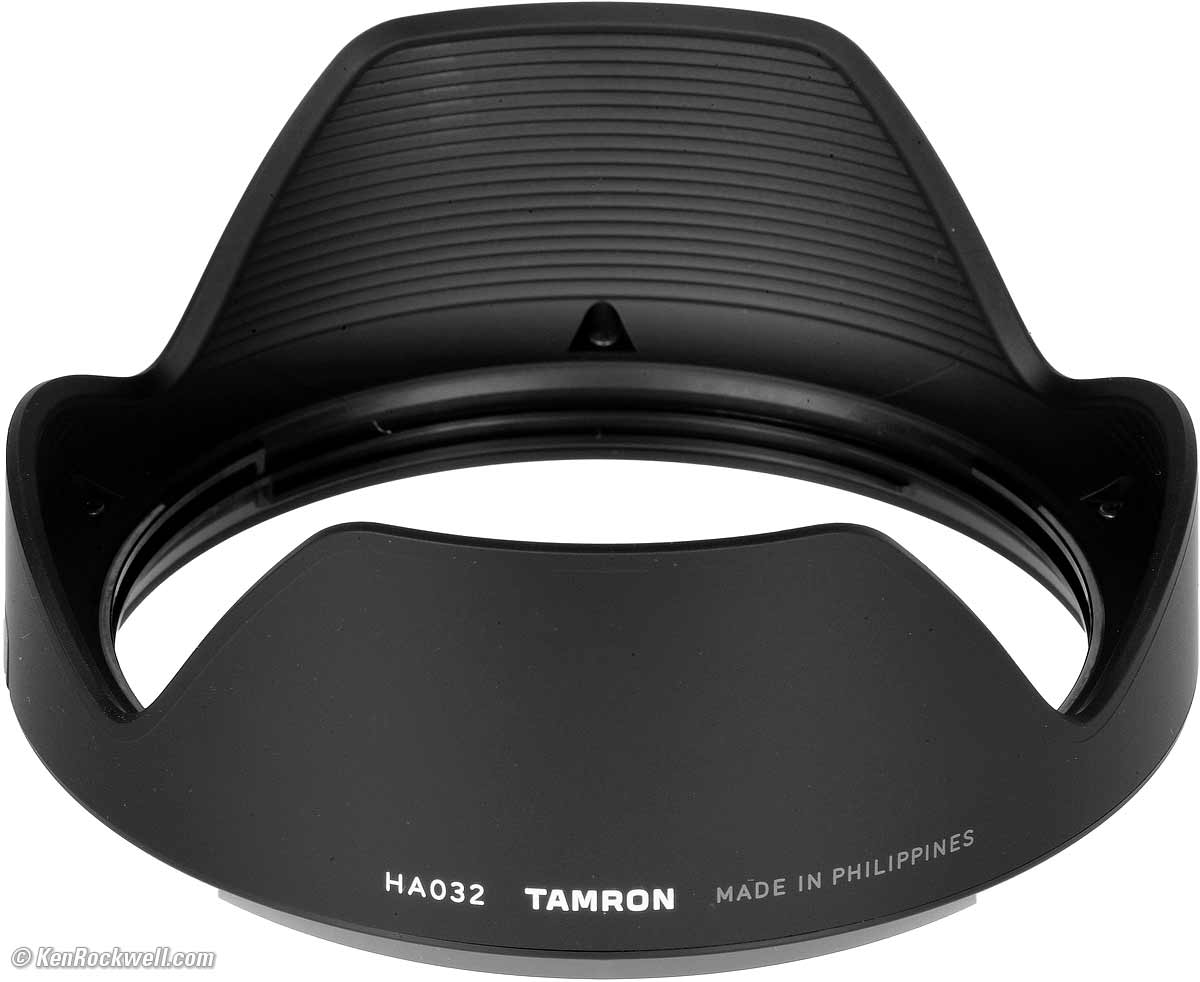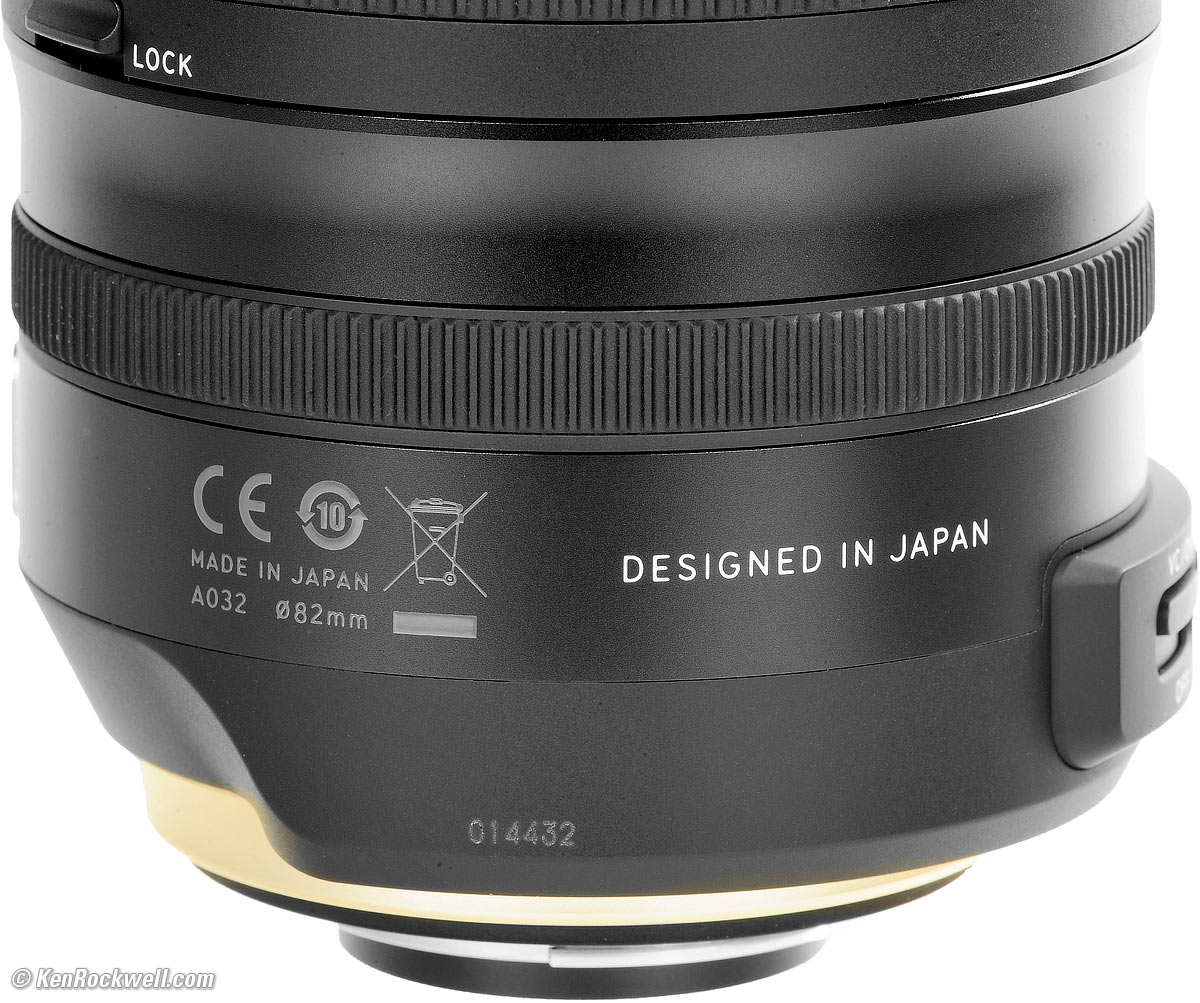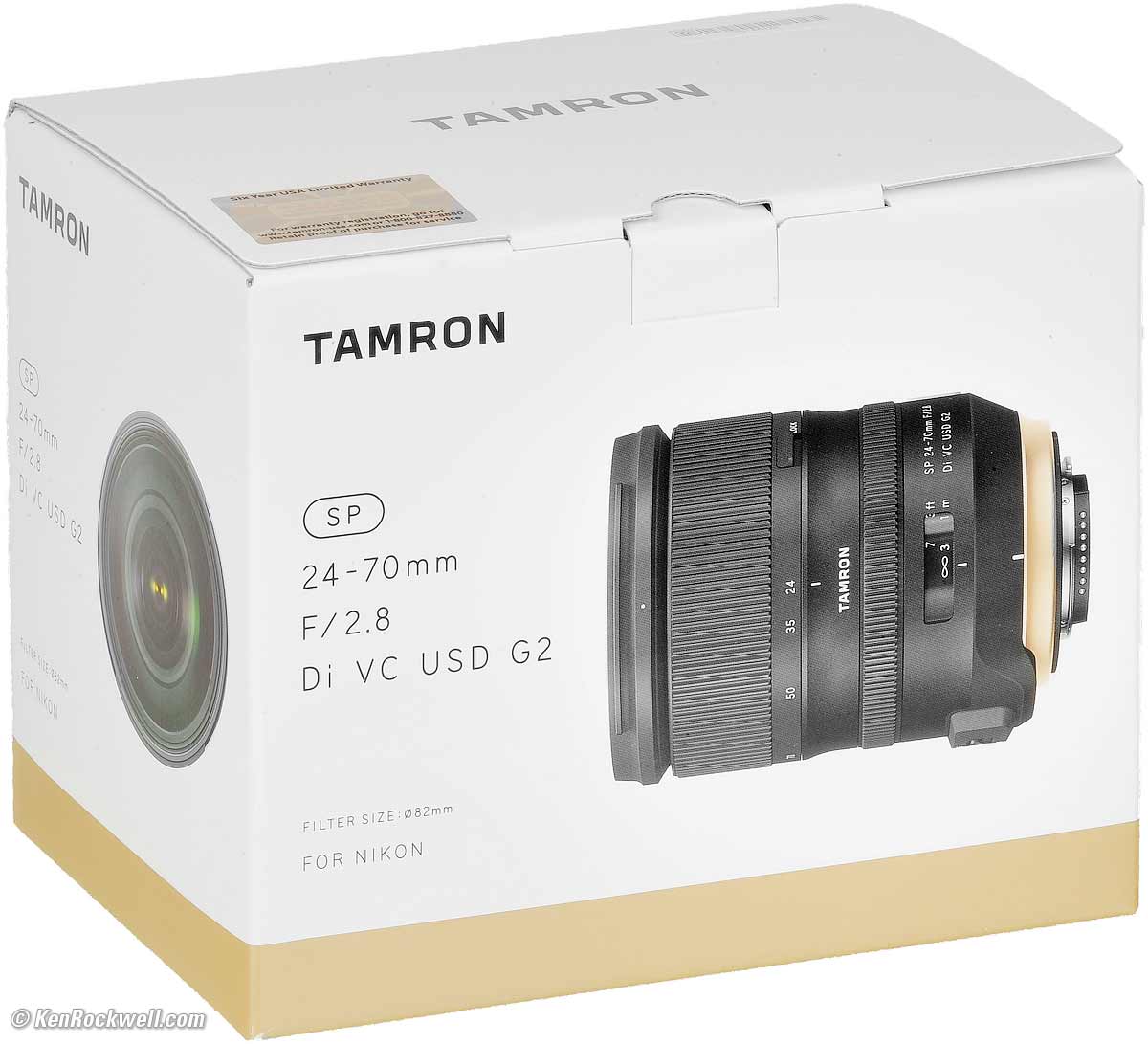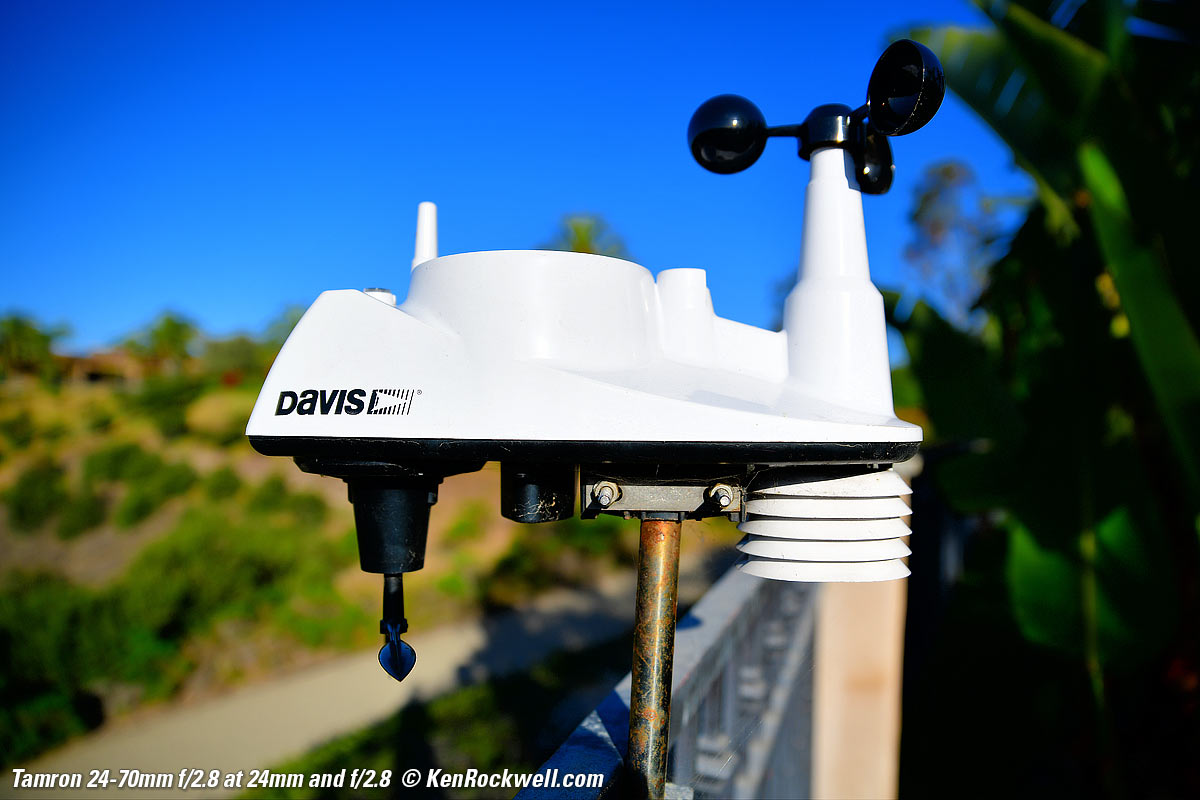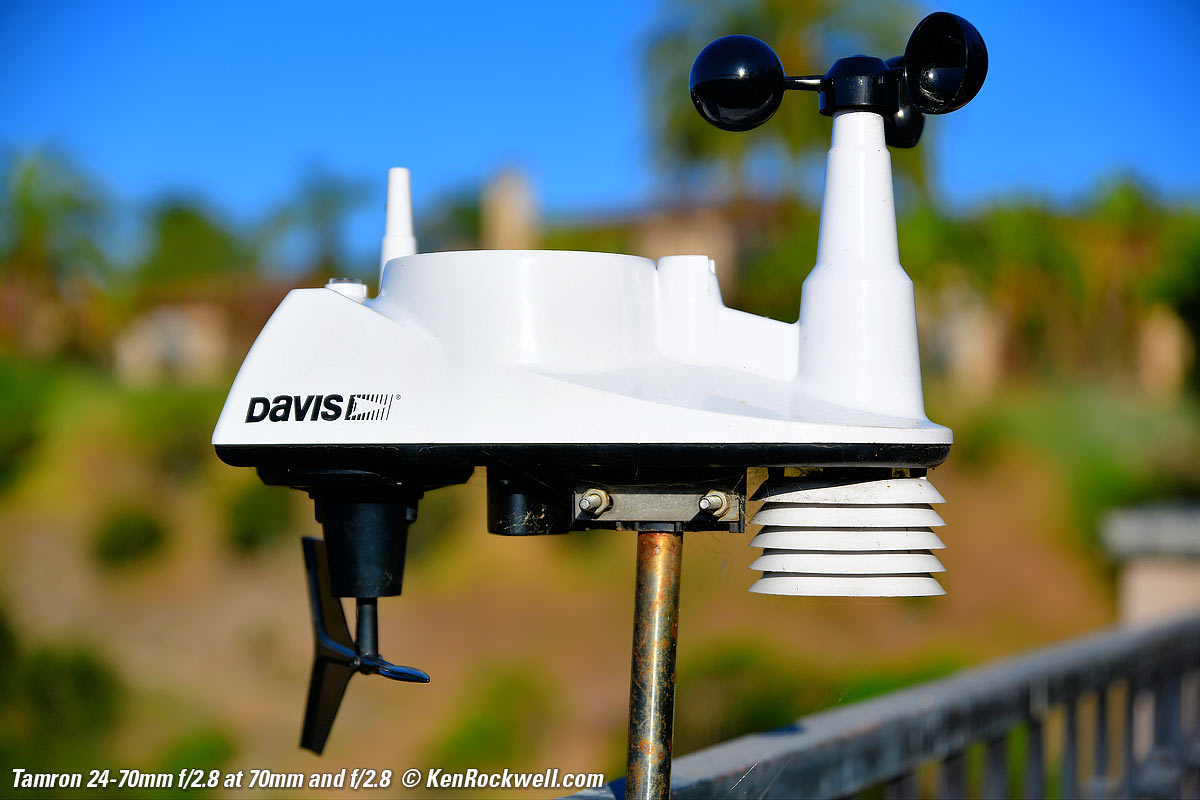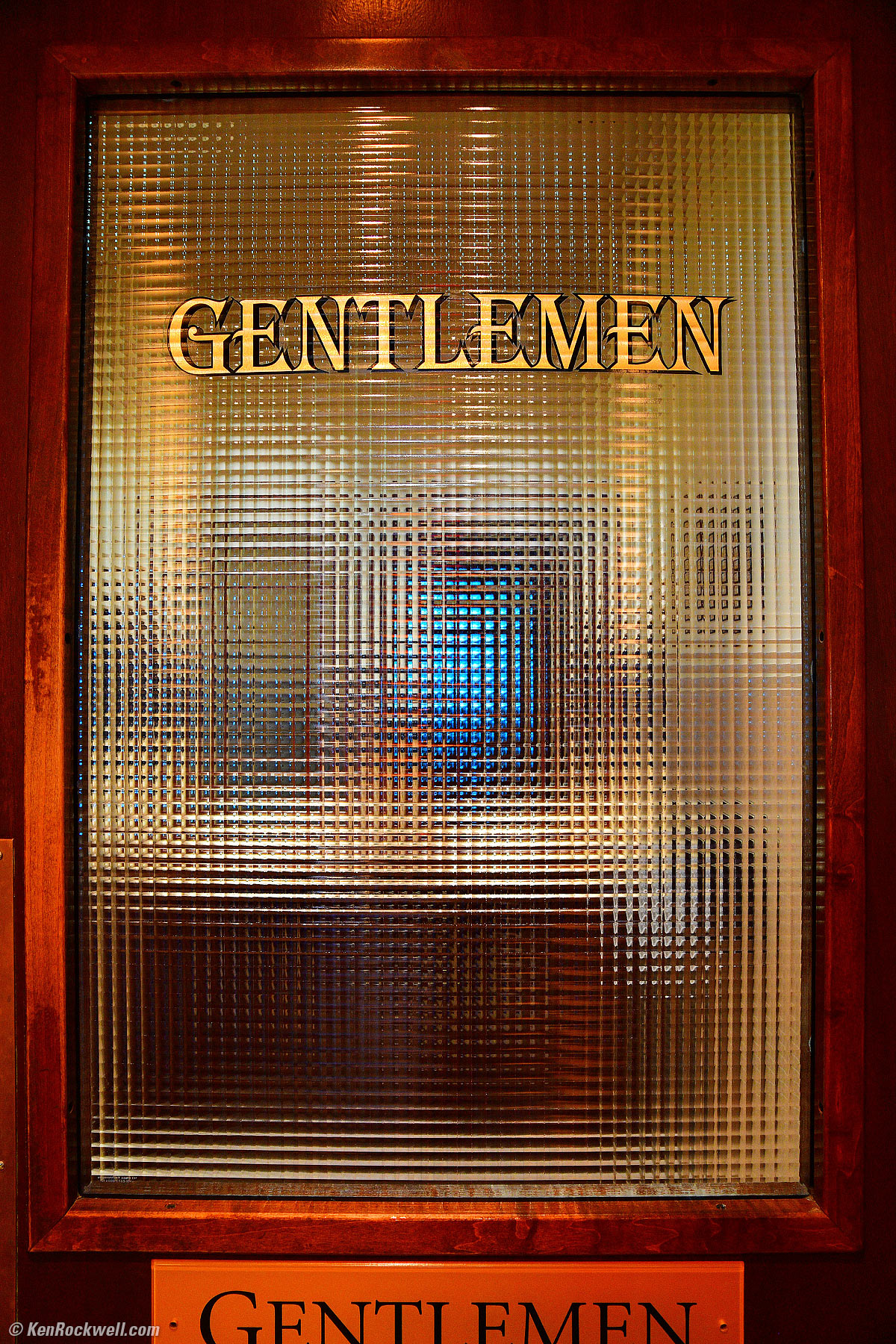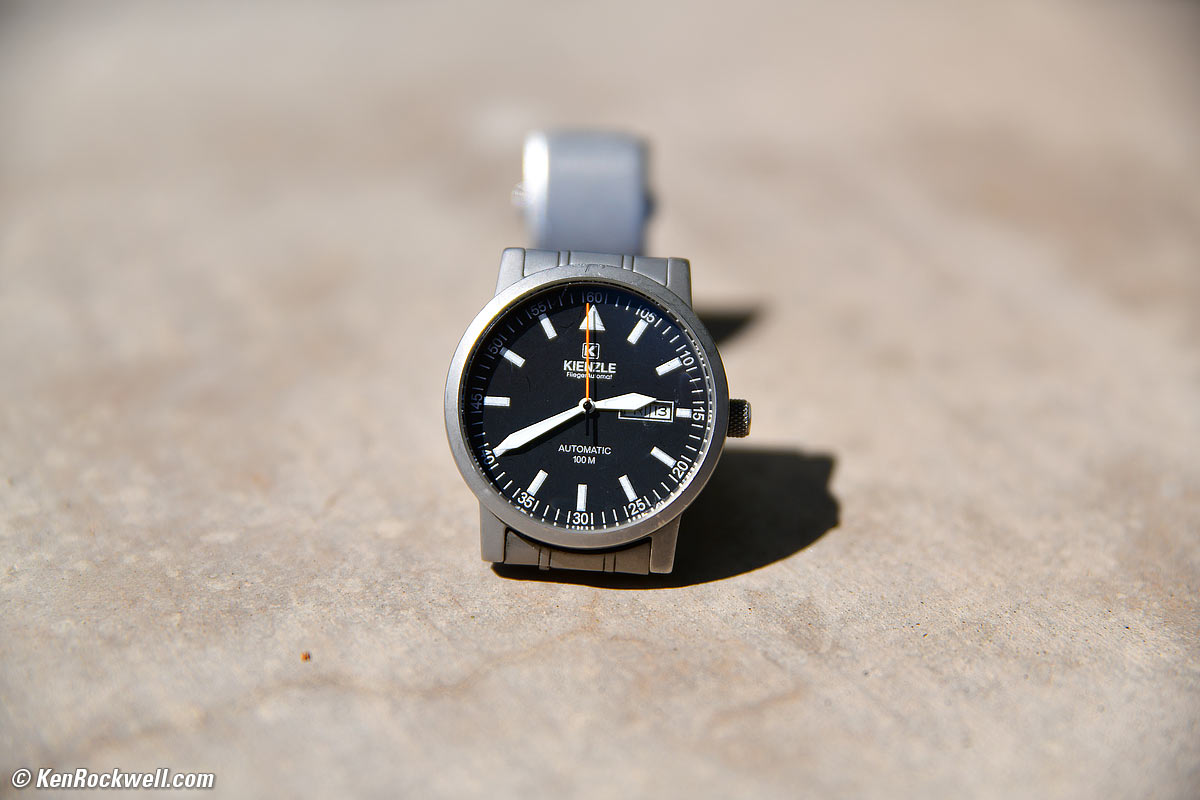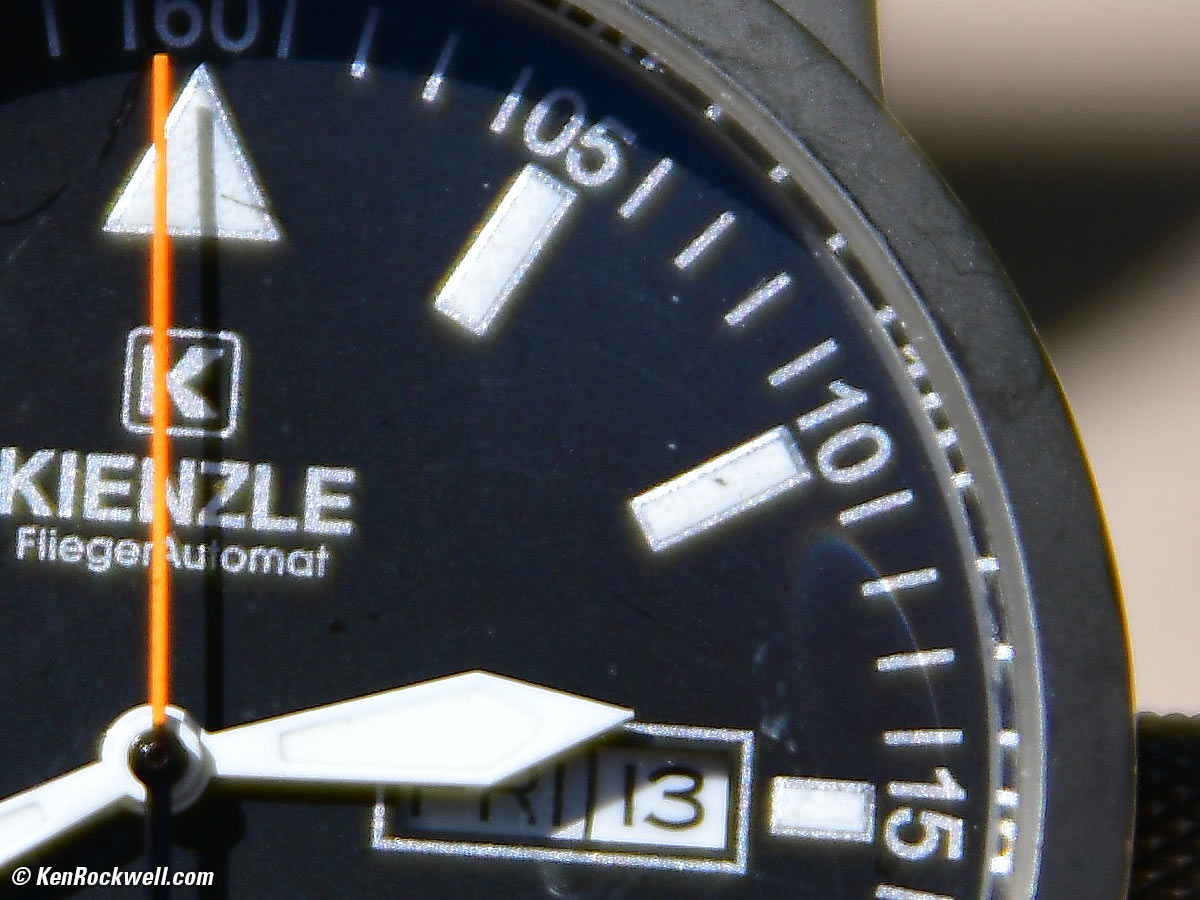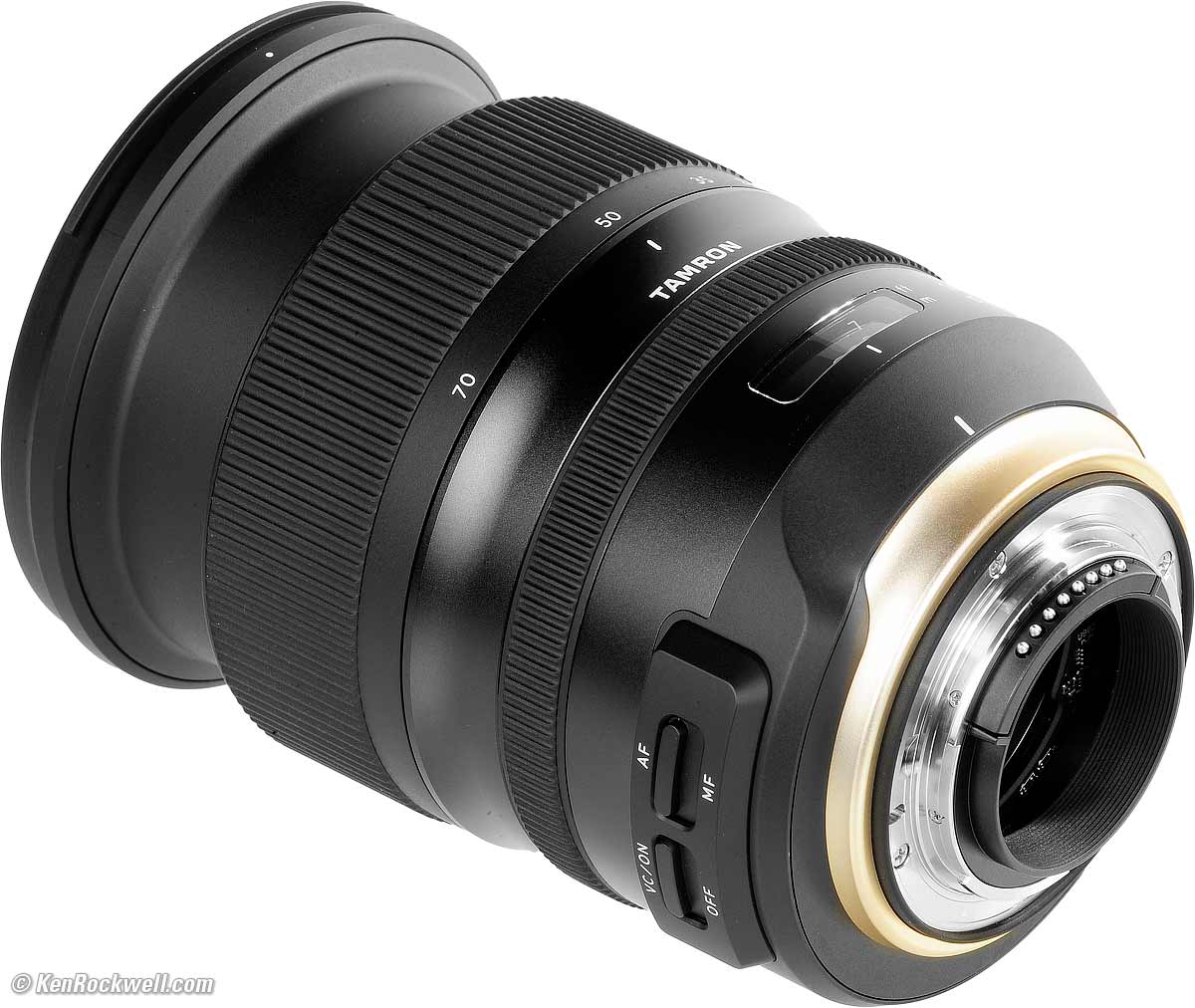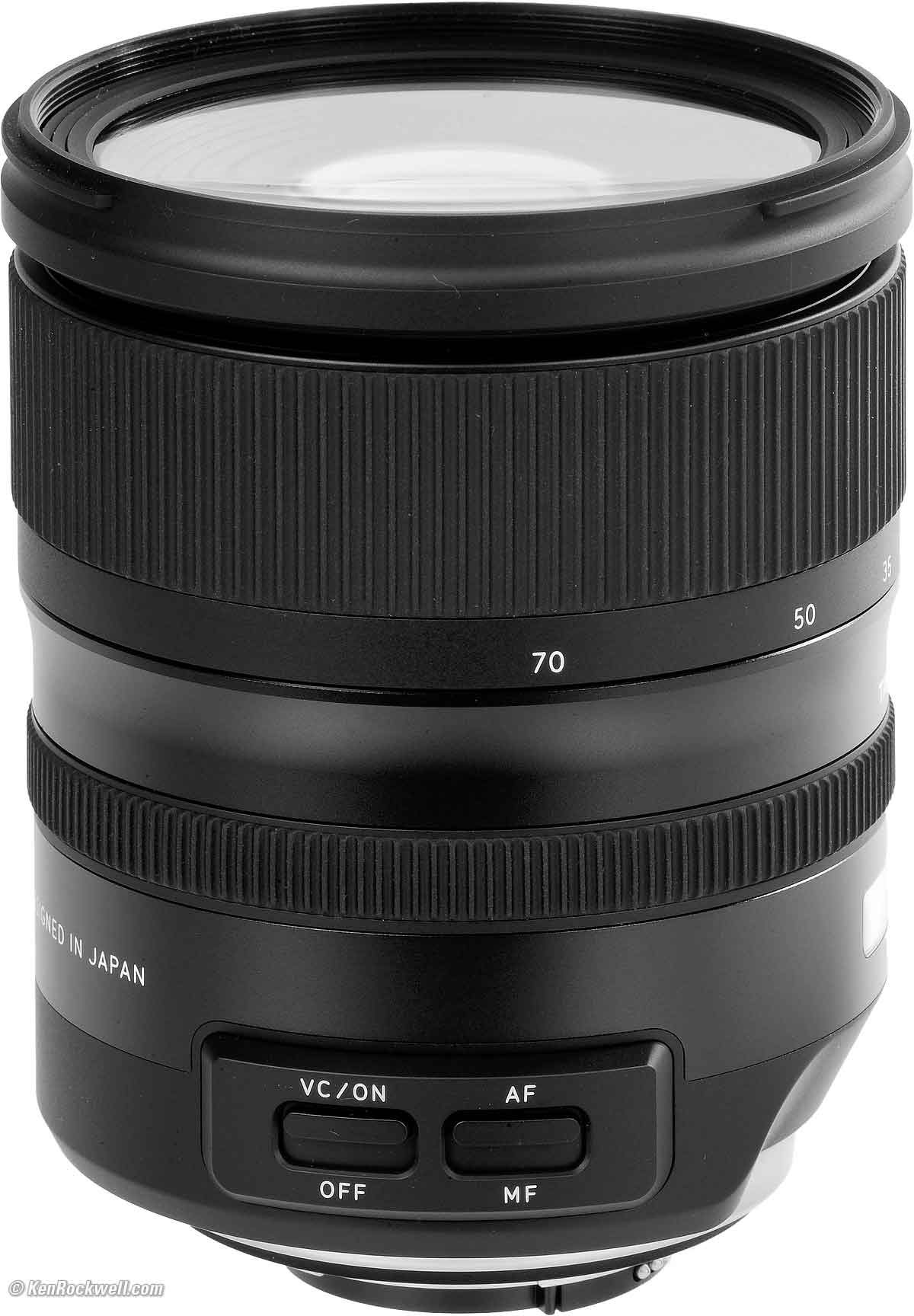Tamron 24-70mm f/2.8
Full-Frame VC G2 (2017-)
Sample Images Intro Format Compatibility
Specs USA Version Performance Compared
Tamron 24-70mm f/2.8 VC G2 (82mm filters, 31.7 oz./898g, 1.25'/0.38m close focus, about $1,199) bigger. I got my Nikon version at B&H. I'd also get the Nikon version at Adorama or at Amazon. There is a Canon version at B&H, which I'd also get at Adorama or at Amazon.
This all-content, junk-free websites biggest source of support is when you use those or any of these links to my personally-approved sources when you get anything, regardless of the country in which you live. Tamron does not seal its boxes in any way, so never buy at retail or any other source not on my personally approved list since you'll have no way of knowing if you're missing accessories, getting a defective, damaged, returned, non-USA, store demo or used lens. Get yours only from the approved sources I use myself for the best prices, service, return policies and selection. Thanks for helping me help you! Ken.
April 2018 Canon Sony Nikon Tamron Fuji LEICA Zeiss Hasselblad all reviews
Nikon 24-70mm f/2.8 VR FX (check price)
Nikon 24-70mm f/2.8 G FX (check price)
Canon 24-70mm f/2.8 L II (check price)
Canon 24-70mm f/2.8 L (get it used)
Canon 24-70mm f/4 L IS (check price)
Sample Images
Top Sample Images Intro Format
Compatibility Specs USA Version
All these images are from BASIC JPGs; no RAW files, NORMAL or FINE JPGs were used.
Curtis P-40 Warhawk, Palm Springs, 10 April 2018. Nikon D850, Tamron 24-70mm f/2.8 G2 at 45mm at f/2.8 at 1/25 at Auto ISO 280, exactly as shot. bigger or camera-original © file.
Sharp enough for you? Hand-held at 1/25 of a second wide-open at f/2.8 you can still see every layer of paint and the details in the wear on every screw head in this 1,200 × 900 pixel crop from the above 45MP image:
1,200 × 900 pixel crop from above. bigger or camera-original © file.
If this is about 6" (15cm) wide on your screen, the complete image would print at a huge 27½″ × 41¼″ (70 × 105 cm) at this same high magnification. If this is about 12" (30cm) wide on your screen, the complete image would print at an insane 55 × 82½″ (1.4 × 2.1 meters) at this same extremely high magnification!
Real Estate Listing Photo, 09 April 2018. Nikon D850, Tamron 24-70mm f/2.8 G2 at 24mm at f/13 at 1/160 at Auto ISO 100, Perfectly Clear. bigger or full-resolution © file.
Pretty darn sharp. If you look at the full-resolution © file you'll see that the trees on the top left are softer; that's because the focus is on the roses up front and those distant trees are simply out of focus. The other three corners are spectacularly sharp.
Katie and Sofie at lunch at Stuft Pizza, 11 April 2018 (focused on Sofie the dog). Nikon D850, Tamron 24-70mm f/2.8 G2 at 24mm at f/2.8 at 1/125 at Auto ISO 220, Perfectly Clear. bigger or full-resolution file to explore on your computer.
The only thing in focus is the puppy; everything else is supposed to be out of focus.
"R" Signal Flag, 10 April 2018. Nikon D850, Tamron 24-70mm f/2.8 G2 at 48mm at f/2.8 at 1/25 at Auto ISO 160, Perfectly Clear. bigger or camera-original © file.
It's sharp enough to count every single thread in this flag and its backdrop, hand-held at 1/25 of a second wide-open at f/2.8! Look at the camera-original © file on your computer and count them yourself. Sharp enough?
Bentley at f/2.8, 11 April 2018. Nikon D850, Tamron 24-70mm f/2.8 G2 at 70mm at f/2.8 at 1/1,000 at Auto ISO 64, Perfectly Clear. bigger or full-resolution file.
Of course only the grille and headlights are in focus at f/2.8.
Bentley at f/11, 11 April 2018. Nikon D850, Tamron 24-70mm f/2.8 G2 at 70mm at f/11 at 1/40 at Auto ISO 64, Perfectly Clear. bigger or full-resolution file.
Stabilization makes it trivial to get ultrasharp results handheld at 1/40 at 70mm; no tripod needed.
Introduction
Top Sample Images Intro Format
Compatibility Specs USA Version
|
I buy only from these approved sources. I can't vouch for ads below. |
This Image-Stabilized Tamron 24-70mm f/2.8 is half the price of Canon or Nikon and works great. Feel free to read the rest of this review, but for all practical purposes this lens takes the same pictures as the Canon or Nikon lenses, with the gotcha that there are no lens profiles so you'll have no option for automatic in-camera distortion correction, and on Canon only there will be no correction of lateral color fringes or corner falloff (Nikons correct lateral color and falloff with any lens, no profile needed).
Look at my Sample Images; they're super-sharp. If an extra thousand dollars in your pocket matters to you, by all means consider this lens instead of the Canon or Nikon lens. What you lose isn't so much picture quality as the potential for the camera you buy ten years from now not working with this lens, but if you're considering this lens today you're probably not worried about ten or twenty years from now.
Just grab the genuine mechanical focus ring at any time for instant manual-focus override.
Good
● Sharp.
● Half the price of Canon or Nikon's similar lenses with about the same performance.
● Fast and nearly silent autofocus.
● Great stabilization.
Bad
● For the price, nothing.
Missing
● No lens profiles for in-camera corrections. Nikons can correct any lens for lateral chromatic aberrations and falloff without a profile, but Canon can't correct these without a profile. No camera can correct this lens' distortion without a profile — and neither Canon nor Nikon are going to offer profiles for a Tamron lens.
Format
Top Sample Images Intro Format
Compatibility Specs USA Version
This is a full frame lens, and I'm reviewing it as such.
It works great on APS-C cameras, on which you may make the usual inferences.
Tamron 24-70mm f/2.8 VC G2. bigger.
Compatibility
Top Sample Images Intro Format
Compatibility Specs USA Version
Caution
No camera maker authorizes Tamron to make lenses for their cameras, and no camera maker authorizes you to use this lens on their cameras. If it doesn't work, talk to Tamron, not to Nikon or Canon.
While it seems very compatible, there is always the potential that something won't work on your camera, especially in the future as newer camera models come out.
No worries, so long as you get yours from an authorized source you can return it for a full cash refund if you don't love it or it doesn't work on your camera.
Canon
It should work flawlessly on every Canon DSLR and every Canon 35mm autofocus (EOS) camera ever made since 1987.
It should work on Canon's mirrorless EOS-M cameras, but only if you use the EOS-M adapter.
Nikon
It should work perfectly on all FX Nikons, and should work well on DX Nikon models introduced since about 2007.
I tried it on my D3 that I bought back in 2007, and everything works great, as well as on my 2018 D850.
This Tamron 24-70 has a new electronic diaphragm which won't work on camera models introduced before about 2007.
It won't work properly on older DSLRs or any 35mm camera; they won't be able to work with the electronic diaphragm and will only shoot wide-open. If you don't mind shooting wide-open, go ahead and shoot it on older cameras if you like. Even on a 1959 Nikon F you can focus and zoom manually and shoot wide open.
It's useless on my 2006 Nikon D40, which simply shows an Error.
I tried it on my 1990s Nikon F5, and it autofocuses and stabilizes just fine, but it only shoots at f/2.8.
On my 2005 D2HS autofocus and VR work fine, but it only shoots at f/2.8 regardless of how you set the camera, so often you'll get overexposure unless you shoot in A or M mode and set f/2.8.
Autofocus, VR and the diaphragm don't work on my 1980s Nikon F4. I'd have to focus manually, lose VR and have to shoot at f/2.8.
YES: As of January 2018, electronic diaphragm lenses should work only on the:
D5, D4, D4s, D3, D3s, D3P, D3x, Df,
D850, D810, D800/e, D750, D700, D610, D600,
D5600, D5500, D5300, D5200, D5100, D5000,
Nikon 1 J1, J2, J3, J4 with FT-1, Nikon 1 V1, V2, V3 with FT-1, and Nikon 1 S1, S2 with FT-1.
NO: Electronic diaphragm lenses lenses will not work on the
D100, D200, D90, D80, D70 series,
D60, D50, D40 series, or the D3000, and will not work on any 35mm camera. The diaphragm will stay wide-open, which may or may not be a problem for you. In the case of tele lenses this isn't much of a problem because we usually shoot long lenses wide-open, in which case these lenses are compatible with everything.
This won't work with any of the Pronea cameras either— but who cares?
See Nikon Lens Compatibility for more. Honestly half of Nikon's current catalog of lenses won't work on half their new cameras today, so I don't know that this lens will have any more problems than any other Nikon lens. Just be sure to buy only from an approved source so you'll have the option of a 100% cash refund return if it just doesn't work on your camera. Nikon isn't Canon that takes one sentence to say "Compatible with everything since 1987;" Nikon is a patchwork of shame today when it comes to compatibility.
Sony
There is no Sony version.
Don't waste your time with adapters to Sony; you're really asking for trouble.
For Sony, get the 24-105mm f/4 G or 24-70/2.8 G, either of which are superior to this lens.
Specifications
Top Sample Images Intro Format
Compatibility Specs USA Version
Name
Tamron 24-70mm f/2.8 VC G2. bigger.
Tamron calls this the Tamron SP 24-70mm f/2.8 Di VC USD G2:
SP: Special Performance; Tamron has called most of their lenses this since at least the 1970s.
Di: Works on digital cameras - so?
VC: Vibration control (Image Stabilization).
USD: Ultrasonic Silent Drive autofocus motor.
G2: Tamron's second 24-70/2.8 VC.
Also has:
∅82: 82mm filter thread.
Optics
17 elements in 12 groups.
2 LD extra-low dispersion elements, which help reduce secondary axial chromatic aberration.
3 molded glass aspherical elements.
1 Hybrid (glass/plastic) aspherical element.
2 high refractive-index elements.
Fluorine coating to resist dirt and smudges.
"Pumper" zoom; the front extends as zoomed longer.
Coverage
Diaphragm
Tamron 24-70mm f/2.8 VC G2. bigger.
9 rounded blades.
Stops down to f/22.
Focal Length
24~70mm.
When used on a Nikon DX camera, it sees the same angles of view as a 35~105mm lens sees when used on an FX or 35mm camera.
When used on a Canon APS-C camera, it sees the same angle of view as a 38~112 mm lens sees when used on a full-frame or
See also Crop Factor.
Angles of View
Full Frame
84º ~ 34.3º diagonal.
APS-C
60.3º ~ 22.3º diagonal.
Autofocus
Internal focus.
No external movement as focused, so no air or dust is sucked in.
Focus Scale
Yes.
Infinity Focus Stop
No.
Depth of Field Scale
No.
Reproduction Ratio Scale
No.
Infrared Focus Indices
No.
Close Focus
1.25 feet (0.38 meters).
Maximum Reproduction Ratio
1:5 (0.20 ×).
Image Stabilizer
Rated 5 stops improvement.
Filters
Plastic 82 mm filter thread.
Hood
Tamron 24-70mm f/2.8 VC G2. bigger.
Case
Just a sack, included.
Size
Nikon
3.5" maximum diameter × 4.3" extension from flange.
88.4 mm maximum diameter × 108.5 mm extension from flange.
Canon
3.5" maximum diameter × 4.4" extension from flange.
88.4 mm maximum diameter × 111 mm extension from flange.
Weight
31.680 oz. (898.1g) actual measured weight, Nikon.
31.7 oz. (900 g) specified for Nikon.
31.9 oz. (905 g) specified for Canon.
Quality
Tamron 24-70mm f/2.8 VC G2. bigger.
Made in Japan.
Announced
2017.
Tamron's Model Numbers
Canon: AFA032C-700.
Nikon: AFA032N-700.
Price, USA
$1,199, April 2018.
Tamron 24-70mm f/2.8 VC G2. bigger.
Getting a Legal USA Version
Top Sample Images Intro Format
Compatibility Specs USA Version
This section applies in the USA only.
In the USA, be sure your box has this hologram sticker:
Tamron 24-70mm f/2.8 VC G2. bigger.
If not, you got ripped off with a gray market version from another country. This is why I never buy anyplace other than from my personally approved sources. You just can't take the chance of buying elsewhere, especially at any retail store, because non-USA versions have no warranty in the USA, and you won't even be able to get firmware or service for it — even if you're willing to pay out-of-pocket for it when you need it!
If a gray market version saves you $400 it may be worth it, but for $200 or less I wouldn't risk having no warranty or support.
Always be sure to check your box while you can still return it, or just don't buy from unapproved sources or at retail so you'll be able to have your camera serviced and get free updated firmware as needed.
Get yours from the same places I do and you won't have a problem, but if you take the risk of getting yours elsewhere, be sure to check everything while you still can return it.
Performance
Top Sample Images Intro Format
Compatibility Specs USA Version
Overall Autofocus Manual Focus
Breathing Bokeh Distortion Ergonomics
Eyeblow Falloff Filters Flare & Ghosts
Lateral Color Fringes Lens Corrections
Spherochromatism Stabilization Sunstars
Overall
The Tamron 24-70/2.8 G2 is a swell performer. It's big and heavy, and for half the price of the real Canon or Nikon lens, works almost as well. It's sharp, has great bokeh, has fast, quiet autofocus and has great image stabilization and resistance to ghosting.
Autofocus
Autofocus is fast and sure. No problems here. It's nearly silent, too.
Manual Focus
Manual focus is easy. Just slide the real mechanical focus ring with a fingertip.
Just grab the focus ring at any time for instant manual-focus override.
Focus Breathing
Focus breathing is the image changing size as focused in and out. It's important to cinematographers because it looks funny if the image changes size as focus gets pulled back and forth between actors. If the lens does this, the image "breathes" by growing and contracting slightly as the dialog goes back and forth.
The image from this Tamron lens gets smaller as focused more closely.
Bokeh
Bokeh, the feel or quality of out-of-focus areas as opposed to how far out of focus they are, is excellent. Backgrounds are soft and smooth.
Davis 6250 weather station, 17 April 2018. bigger or camera-original © file to explore on your computer (mobile devices rarely display full resolution images properly).
Davis 6250 weather station, 17 April 2018. bigger or camera-original © file to explore on your computer (mobile devices rarely display full resolution images properly).
As always, if you want to throw the background as far out of focus as possible, shoot at 70mm at f/2.8 and get as close as possible.
Distortion
Gold Gentlemen glass and wood bathroom door, Rancho Mirage, 10 April 2018. Nikon D850, Tamron 24-70mm f/2.8 G2 at 26mm at f/2.8 at 1/15 at Auto ISO 1,600, Perfectly Clear.) bigger.
Cork Tree Restaurant, 11 April 2018. Nikon D850, Tamron 24-70mm f/2.8 G2 at 62mm at f/2.8 hand-held at 1/30 at Auto ISO 720, Perfectly Clear. bigger or full-resolution file.
The Tamron 24-70 2.8 G2 has the usual strong barrel distortion at 24mm and moderate pincushion distortion from about 50mm through 70mm as you can see above. Shoot at about 35mm for the least distortion.
No camera can correct it automatically because no Nikon and no Canon camera have a lens profile for this lens.
Distortion cannot be corrected automatically in-camera. If you need to keep straight lines straight, forget this lens because you will always have to be correcting this manually in Photoshop — or shoot at 35mm. Your other lenses may very well be correcting themselves automatically, but your camera can't correct for this lens.
Here are my exclusive Photoshop lens correction filter correction coefficients to correct this distortion manually in your computer. These aren't facts or specifications, these are the results of my research that requires hours of photography and calculations on the resulting data.
On Full-Frame at 10' (3m) |
|
24mm |
+3.60* |
35mm |
-0.50 |
50mm |
-1.80 |
70mm |
-2.20 |
© 2018 KenRockwell.com. All rights reserved.
* Some waviness remains after this correction.
If I applied these corrections factors to these images, the distortion would go away.
Ergonomics
This Tamron is as good as Nikon or Canon here. It's as big and heavy, and the zoom and focus work exactly as well.
The worst thing about it is that the footage scale is in thin, darker gray digits, not bright yellow or green as on Nikon or Canon, so it's pretty much illegible and looks like the meters scale. Good luck telling them apart.
Eyeblow
This Tamron has the potential for eyeblow since air pumps in or out of the back of the lens as zoomed.
Falloff
Nikon cameras will correct the falloff automatically with the default Normal Vignette Control. Nikons need no lens profiles for this.
Canon cameras have no way of correcting falloff, they require a lens profile which doesn't exist for this off-brand lens.
I've greatly exaggerated the falloff by shooting a gray field and placing these on a gray background:
Falloff on full-frame, no correction. This is what you'll get on Canon, and on Nikon with Vignette Control turned off.
© 2018 KenRockwell.com. All rights reserved.
Falloff on Nikon full-frame, Vignette Control set to Normal.
© 2018 KenRockwell.com. All rights reserved. |
Filters, use with
There's no need for thin filters. I can use two regular 82mm filters without vignetting on full frame.
Go ahead and use your standard rotating polarizer and grad filters.
Flare & Ghosts
This lens is very resistant to ghosting. It is very hard to get any ghosts.
Lateral Color Fringes
There are no color fringes as shot on Nikon cameras, which by default correct for any that may be there.
I didn't shoot this on Canon, which would require a lens profile to correct any lateral color this lens may have.
Lens Corrections
Nikon
It corrects automatically for falloff (Vignette Control) and lateral color fringes (chromatic aberration). No lens profile is needed for this on Nikon.
Nikons cannot correct for distortion because they require a lens profile, which doesn't exist for this off-brand lens.
Canon
Canon has no lens profile for this lens, and obviously isn't going to be writing one for this off brand lens.
Therefore there is no correction for falloff (peripheral illumination), lateral color fringes (chromatic aberration), distortion or diffraction on any Canon camera.
Macro
Macro gets close, but not that close. There's also some vignetting when shot wide-open at f/2.8 as I've done here.
Kienzle Flieger Automat 800/2843, 13 April 2018. Nikon D850, Tamron 24-70mm f/2.8 G2 at 70mm at f/2.8 at 1/2,000 at Auto ISO 64. bigger or camera-original © file to explore on your computer (mobile devices rarely display full resolution images properly).
It never gets that sharp if you're printing mural sized. Shot wide open as I'm showing here, spherical aberration keeps the contrast down, and you can see color fringes which are actually spherochromatism on out-of-focus areas.
1,200 × 900 pixel crop from above. bigger or camera-original © file to explore on your computer (mobile devices rarely display full resolution images properly).
If this is about 6" (15cm) wide on your screen, the complete image would print at a huge 27½″ × 41¼″ (70 × 105 cm) at this same high magnification. If this is about 12" (30cm) wide on your screen, the complete image would print at a mammoth 55 × 82½″ (1.4 × 2.1 meters) at this same extremely high magnification!
Sadly stopping down doesn't make it that much sharper because autofocus seemed to be a little off.
Mechanical Quality
Tamron 24-70mm f/2.8 VC G2. bigger.
This is a big, heavy and well-made lens. Most of the outside is plastic, and most of the insides are metal.
Hood
Plastic bayonet, included.
Front Bumper
None.
Filter Threads
Plastic.
Hood Bayonet Mount
Plastic.
Front Barrel
Plastic.
Zoom Ring
Rubber-covered plastic.
Mid Barrel
Metal.
Focus Ring
Plastic.
Rear Barrel
Section with focus distance window: metal.
Rearmost Barrel
Section behind focus distance window: plastic.
Identity
Tamron 24-70mm f/2.8 VC G2. bigger.
Tamron 24-70mm f/2.8 VC G2. bigger.
Printed around barrel near focus window and laser-engraved on bottom of barrel.
Internals
Seem like almost all metal!
Dirt Seal at Mount
Yes.
Mount
Dull chromed metal.
Markings
Paint.
Identity engraved in gray on bottom of lens.
Serial Number
Tamron 24-70mm f/2.8 VC G2. bigger.
Laser engraved in dark-gray-on-black on bottom of barrel.
Date Code
None found.
Noises When Shaken
Moderate to strong clunking.
Made in
Japan.
Sharpness
The only limitation to picture sharpness is your skill as a photographer.
If I shot test charts for a living in a lab, no, it's not as sharp as a real Canon or Nikon lens in the corners at f/2.8, but who cares? As real photographers know, nothing is supposed to be sharp in the corners because it leads your eyes out of the frame, and nothing is usually in focus anyway at f/2.8 off in the corners behind your subject. If you're shooting flat subjects, you take boring photos and should be using a macro lens instead.
Look at the sample photos where you can count every thread in a flag, and this was shot at f/2.8. It's plenty sharp, and for the price, it's awesome.
Spherochromatism
Spherochromatism, also called "color bokeh" by laymen, can cause colored fringes on out-of-focus highlights, usually seen as green fringes on backgrounds and magenta fringes on foregrounds with fast, long lenses shot wide open.
It is an advanced form of chromatic aberration in a different dimension than lateral color. Spherochromatism is most commonly seen in fast lenses of moderate focal length when shooting contrasty items at full aperture. It goes away as stopped down.
This lens does have a little spherochromatism, but you aren't likely to see it.
Image Stabilization
Image Stabilization (IS or Vibration Reduction (VR)) works great. The image locks down in my finder, and I can get ultra-sharp shots hand-held at much slower speeds than I'd expect, so all is good.
Sunstars
With a rounded 9-blade diaphragm there aren't any sunstars, and at smaller apertures it gives progressively stronger 18-pointe sunstars from f/11 and smaller. You can see them here at f/11 above the headlights:
Bentley at f/11, 11 April 2018. Nikon D850, Tamron 24-70mm f/2.8 G2 at 70mm at f/11 at 1/40 at Auto ISO 64, Perfectly Clear. bigger or full-resolution file.
Compared
Top Sample Images Intro Format
Compatibility Specs USA Version
Sure, if you have an extra thousand dollars to spend you can get the same thing from Nikon or Canon, but whoops, Canon's best 24-70mm f/2.8 L II has no stabilization.
While I can see a little better sharpness in a lab in the corners wide open, it doesn't matter. For real-world use as you can see, this Tamron lens takes exactly the same pictures. Colors and contrast and AF performance are the same.
See Is It Worth It. If you deserve the best and don't worry about price, sure, get the Nikon or Canon lens. That's what I own; I'm obviously very successful at what I do and my revenues are such that the price of lenses, which last me for a decade or more, don't matter if they give me even the slightest competitive advantage. When I license an image it's usually for more than the price of this lens; I'm not some blogger or YouTuber who just talks and has no portfolio to show for it; my two most recent clients are Merck Pharmaceuticals and McDonald's. On the other hand, for people who shoot for fun and for whom the price of equipment does matter, this is certainly a more sane lens than Nikon's extraordinary 24-70 VR.
See also Best 24-70mm Lenses Compared and my specific recommendations by brand.
Usage
Top Sample Images Intro Format
Compatibility Specs USA Version
Tamron 24-70mm f/2.8 VC G2. bigger.
VC / ON (OFF)
This is Image Stabilization.
Always leave it on (VC/ON), except if you are on a sturdy tripod (OFF).
AF (MF)
This selects auto (AF) or manual focus (MF).
Always leave it at AF, at which setting you can move the focus ring at any time for instant override.
Only set it to MF if you want to lock it in manual focus.
Recommendations
Top Sample Images Intro Format
Compatibility Specs USA Version
For Nikon
Tamron's own rear cap is awful. Leave it in the box and get a real Nikon rear cap for about $5. Tamron's front cap is OK.
The Nikon 24-70mm f/2.8 VR FX costs double what this Tamron does (check Nikon's price). The Nikon lens is bigger and 6 oz. (164g) heavier than the Nikon 24-70 VR, and as you can see the pictures are the same for all practical purposes. Don't you love having a seasoned, expert photographer who isn't trying to sell you something?
If you're a desk jockey who only shoots on weekends then you probably deserve the best and also shoot nothing but Nikon — and you wouldn't be reading this review.
However if you're a real-world shooter who shoots and has to carry this around all day, every day as I do — or if an extra $1,200 in your pocket and having a smaller, lighter lens that does the same thing is important to you, by all means get this Tamron. If you're curious enough to be reading this review, then I'd say this Tamron is a better idea than the Nikon 24-70mm f/2.8 G FX.
I own and use the older Nikon 24-70mm f/2.8 G FX, which is the same weight as this Tamron but lacks VR and costs $600 more (check Nikon's price). I bought my Nikon 24-70mm f/2.8 G when it came out in 2007 and don't need VR, so I've never seen any reason to replace it. It's important to note that I bought my Nikon 24-70mm f/2.8 G 11 years ago and it works flawlessly today on every new Nikon camera I've bought. You never know what's down the road with Tamron; once the warranty expires, you may be out on your own, and if the Tamron doesn't work on whatever camera you buy in the future after your initial return privileged expires, you could be hung out to dry.
Your camera cannot correct this lens' distortion in-camera since there's no lens profile.
I got my Nikon version of this Tamron at B&H. I'd also get the Nikon version at Adorama or at Amazon
If you're still undecided, know that when you get it from any of those links, you can try it yourself and if for any reason you don't love it, you can return it for a full cash refund. You have nothing to lose; you don't have to wonder about this.
For Canon
Tamron's own rear cap is awful. Leave it in the box and get a real Canon rear cap for about $7. Tamron's front cap is OK.
For Canon, I love my Canon 24-70mm f/2.8 L II, which doesn't sell for that much more than this Tamron (check price) and the genuine Canon lens weighs about 3 oz. (100g) less than this Tamron. No, the Canon doesn't have IS as does the Tamron does, but I've never missed it. Since I'm shooting a 50MP 5DSR and already own my Canon 24‑70 L II and I demand the best without regard to price, obviously I'm not buying one of these Tamrons to replace the Canon masterpiece I already own. The Canon 24-70mm f/2.8 L II is a steal today; I paid the full $2,300 for mine when it came out in 2012, and it's only $1,697 last I checked today.
Beware that you won't have any lens profiles to correct color fringes or lens aberrations from the Tamron lens shot on Canon. The samples in this review are shot on Nikon, which correct lateral color and corner falloff even without a lens profile. In other words, you'll see more lateral color fringes and falloff with this lens shot on Canon versus as shot on Nikon, and seeing how the real Canon lens isn't that much of a stretch and weighs less, I'd go for the genuine Canon lens.
Your camera cannot correct this lens' distortion in-camera since there's no lens profile.
However, if money is tight, if you're shooting at lower resolutions or you really want IS, by all means consider this Tamron.
You have nothing to lose if you get the Canon version of this Tamron at B&H, at Adorama or at Amazon, because for some reason you don't love it, you can return it for a full cash refund. You have nothing to lose; you don't have to wonder about this.
For Sony
Get the 24-105mm f/4 OSS G. It's an awesome lens for about the same price as this Tamron. The 24-70/2.8 GM is also great, but I prefer this smaller 24-105 that costs less.
Don't mess with adapters to use the Nikon or Canon version on Sony; either of these genuine Sony lenses will have better optics optimized for mirrorless cameras, as well as much faster autofocus also optimized to the new breed of Sony cameras. This is an old-guard DSLR lens, not a mirrorless lens.
Filters & Protection
I use a clear (UV) protective filter instead of a cap. I only use a cap when I throw this in my bag, otherwise I leave a clear protective filter on my lens at all times so I'm ready to shoot instantly.
The very best protective filter is the 82mm Hoya multicoated HD3 UV which uses hardened glass and repels dirt and fingerprints.
For less money, the B+W 82mm 010 is an excellent filter, as is the multicoated version and the basic multicoated Hoya filter and the Hoya Alpha filter, but the Hoya HD3 is the toughest and the best.
Any of these filters protects as well and gives ultrasharp images, but since filters last a lifetime, you may as well get the best since the Hoya HD3 is tougher and stays cleaner than the others since it repels oil and dirt.
© Ken Rockwell. All rights reserved. Tous droits réservés. Alle Rechte vorbehalten.
Helping those who help us
I got my Nikon version at B&H. I'd also get the Nikon version at Adorama or at Amazon. There is a Canon version at B&H, which I'd also get at Adorama or at Amazon.
This all-content, junk-free website's biggest source of support is when you use those or any of these links to approved sources when you get anything, regardless of the country in which you live. I use the stores I do because they ship from secure remote warehouses where no one gets to touch your new lens before you do. Buy only from the approved sources I use myself for the best prices, service, return policies and selection.
If you find this page as helpful as a book you might have had to buy or a workshop you may have had to take, feel free to help me continue helping everyone.
If you've gotten your gear through one of my links or helped otherwise, you're family. It's great people like you who allow me to keep adding to this site full-time. Thanks!
If you haven't helped yet, please do, and consider helping me with a gift of $5.00.
As this page is copyrighted and formally registered, it is unlawful to make copies, especially in the form of printouts for personal use. If you wish to make a printout for personal use, you are granted one-time permission only if you PayPal me $5.00 per printout or part thereof. Thank you!
Thanks for reading!
Mr. & Mrs. Ken Rockwell, Ryan and Katie.
